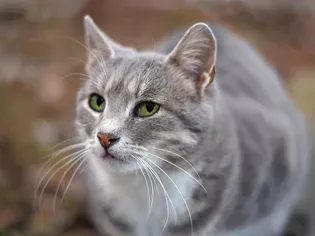What to Expect When Your Cat Is in Heat
Updated on 04/26/24

What to Expect When Your Cat Is in Heat
As a cat owner, it's essential to be prepared for the inevitable: your feline companion going into heat. This natural process can be a confusing and overwhelming time for both cats and their owners, but understanding what to expect can make it a much smoother experience. In this comprehensive guide, we'll delve into the intricacies of cat heat cycles, exploring the physical, behavioral, and emotional changes your furry friend will undergo.
Understanding the Cat Heat Cycle
A cat's heat cycle, also known as estrus, is a recurring hormonal event that signifies her readiness to mate. This cycle typically lasts between 14 and 21 days, although it can vary between individual cats.
Stages of the Heat Cycle
The heat cycle consists of four distinct stages:
1. Proestrus: This initial stage is characterized by subtle changes in the cat's behavior. She may become more affectionate, vocal, and restless.
2. Estrus: This is the peak of the heat cycle, when the cat is most receptive to mating. Her vulva will appear swollen and discharge a clear or bloody fluid.
3. Metestrus: During this stage, the cat's hormone levels decline, and she becomes less interested in mating.
4. Diestrus: This final stage is the longest and represents the period when the cat is not receptive to mating.
Recognizing the Signs of Heat
Observing your cat's behavior and physical appearance can help you determine if she is in heat. Common signs include:
- Increased vocalization (meowing, chirping, howling)
- Restlessness, pacing, or rubbing against objects
- Tail held high and to one side
- Swollen or inflamed vulva
- Discharge of a clear or bloody fluid
Managing Your Cat in Heat
While there is no way to prevent your cat from going into heat, there are steps you can take to manage her during this period:
1. Provide a Quiet Environment: Cats in heat can be easily overwhelmed by noise and chaos. Create a calm and relaxing environment to help her cope with the hormonal fluctuations.
2. Monitor Her Behavior: Keep a close eye on your cat's behavior and take note of any unusual changes. Excessive vocalization, aggression, or destructive behavior may require veterinary attention.
3. Keep Her Indoors: To prevent unwanted mating, it's crucial to keep your cat indoors during her heat cycle. Even indoor cats can escape through open windows or doors.
4. Clean Up Discharge: The discharge produced during heat can be messy. Use a damp cloth to gently clean the area around her vulva and prevent staining.
5. Consider Spaying: Spaying, or ovariohysterectomy, is a surgical procedure that permanently sterilizes a female cat. It eliminates the risk of unwanted pregnancies, prevents certain health issues, and eliminates heat cycles altogether.
Dealing with Behavioral Challenges
Cats in heat can exhibit a range of behavioral challenges, including:
- Vocalization: Excessive vocalization, especially at night, can be a nuisance for both cats and owners. Providing her with a safe and comfortable space, as well as distracting her with toys or treats, can help reduce the noise.
- Aggression: Some cats may become aggressive or irritable during heat. Avoid interacting with her when she is displaying these behaviors and provide ample space for her to retreat and calm down.
- Destructive Behavior: Cats in heat may engage in destructive behaviors such as scratching furniture or spraying urine. Provide plenty of scratching posts and catnip toys to redirect her attention and prevent damage to your home.
When to Seek Veterinary Attention
While heat cycles are a normal part of a cat's life, there are certain situations where veterinary attention is necessary:
- Persistent or Excessive Bleeding: Heavy bleeding or bleeding that lasts for more than 10 days can be a sign of a uterine infection or other health issue.
- Abnormal Discharge: A greenish or foul-smelling discharge may indicate an infection.
- Behavioral Changes: Dramatic or sudden behavioral changes, such as aggression or depression, can be a sign of an underlying medical condition.
Conclusion
Understanding the cat heat cycle is essential for providing your feline companion with the best possible care. By recognizing the signs of heat, managing her behavior, and seeking veterinary attention when necessary, you can help your cat navigate this natural process with ease and comfort. Remember, every cat is different, so be patient and attentive to their individual needs during this time.
Explore More Pets

Cat Behavior Problems
How to Stop Aggression in Kittens

Long-Haired Cat Breeds
Siberian Cat: Breed Profile, Characteristics, & Care

Cat Behavior Problems
How to Stop Kittens From Scratching and Biting

Long-Haired Cat Breeds
Turkish Angora: Cat Breed Profile, Characteristics & Care

Basic Training
How to Socialize Your Kitten

Short-Haired Cat Breeds
Cute Pictures & Facts About Calico Cats & Kittens

Litter Box Training
Training Your Kitten to Use the Litter Box

Long-Haired Cat Breeds
10 Fun Facts About White Cats